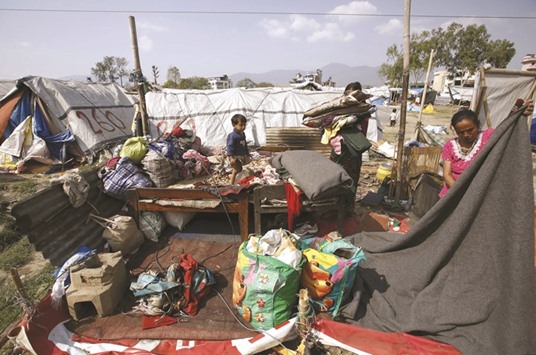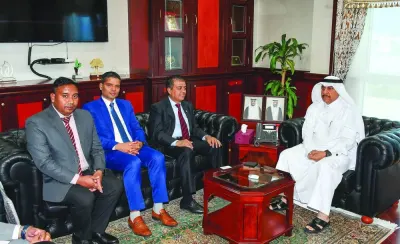A year after the deadly earthquake in Nepal, thousands of people, especially women, are being deprived of funds to rebuild because they do not own land or cannot prove they owned the land where they lived, Oxfam has said.
Nepal’s government requires proof of ownership, but many victims have lost documents and others did not formally own the land where they lived, said a report by the international anti-poverty
organisation.
The government this month began distributing grants of 200,000 Nepali rupees ($1,900) to families that can prove they owned land before the earthquake, which struck on April 25, 2015.
The quake killed some 9,000 people, injured more than 22,000 others and damaged or destroyed more than 900,000 houses.
“Families who are landless and who were living on unregistered land are very much uncertain about the future and support that the government had promised,” said Prabin Man Singh, research and policy co-ordinator for Oxfam, who co-authored the report.
“Those families are the poorest and the most vulnerable among the victims.”
Some 3mn people are living in temporary shelters with tarpaulin roofs ahead of Nepal’s monsoon season, according to Save the Children, CARE International and other agencies.
Land tenure is largely undocumented in Nepal, and data is limited and contradictory, the Oxfam report said.
It cited one pre-quake government report that said as many as 480,000 families, or 9% of the population, did not have access to land, and another report that said a third of Nepal’s farmers did not own the land they cultivated.
The United Nations has said a quarter of Nepalese households - about 1.3mn - did not have any land or enough land to support families.
But Oxfam said that in post-earthquake surveys, more than 90% of people claimed to own their own land before the disaster.
As reconstruction plans are instituted, Oxfam said women are often excluded because they “are less likely to inherit land, have land registered in their name or obtain documentation to prove their entitlement.”
Under Nepal’s constitution adopted last September, women have equal rights to own land. But inheritance laws have kept the ownership
numbers low.
Donors pledged $4.1bn for reconstruction after the earthquake, but aid groups have criticised the slow pace of government reconstruction efforts.
An estimated 4mn people are still living in sub-standard temporary shelters, according to the International Federation of Red Cross and Red Crescent Societies.
Many were living hand-to-mouth even before the quake, which dealt a huge blow to Nepal’s already fragile economy.
After months of bickering, the government finally established a National Reconstruction Authority (NRA) in December to oversee rebuilding and distribute funds.
Until then, rebuilding had effectively been put on hold because the government had instructed people to follow specific quake-resistant designs to qualify for aid—but had not released the blueprints.
“You had many organisations... willing to support housing reconstruction, but they had to act in a vacuum, a policy vacuum. So they could not start work,” said Jennifer Duyne, who heads the international and Nepali donor reconstruction effort.

Kumari Kaflay, right, from Sindhupalchok district, arranges her belongings after a windstorm destroyed her temporary shelter at a camp where families displaced by the April 2015 earthquake live in Kathmandu.


